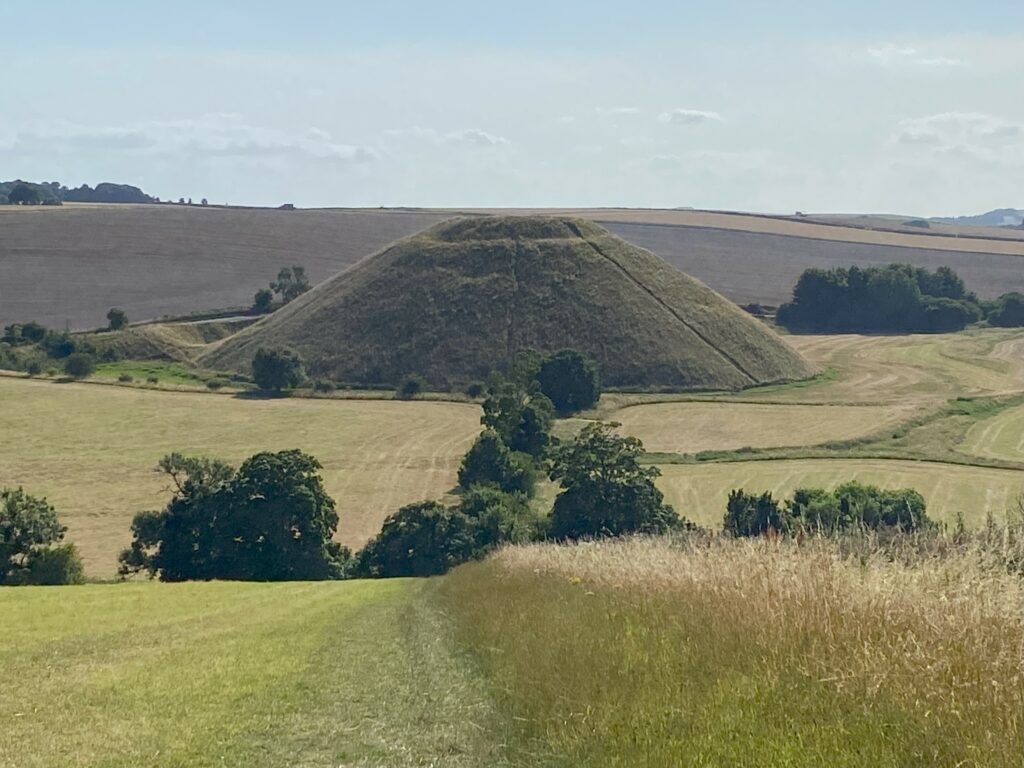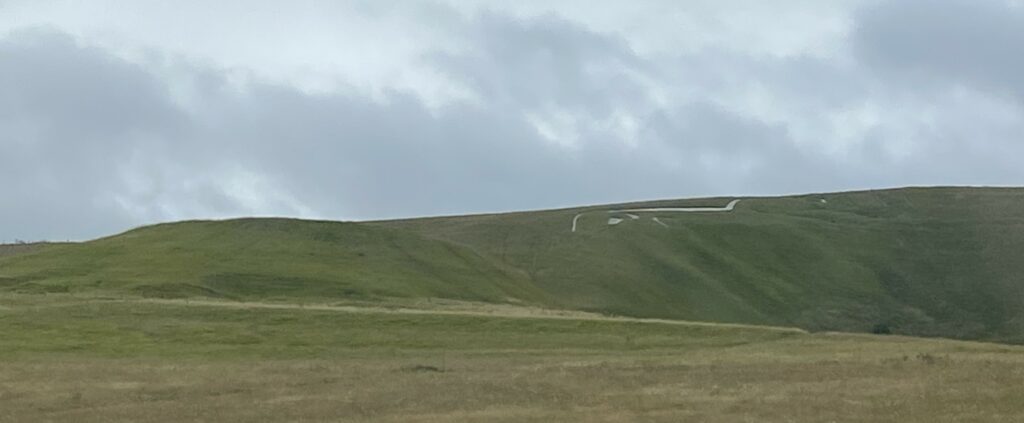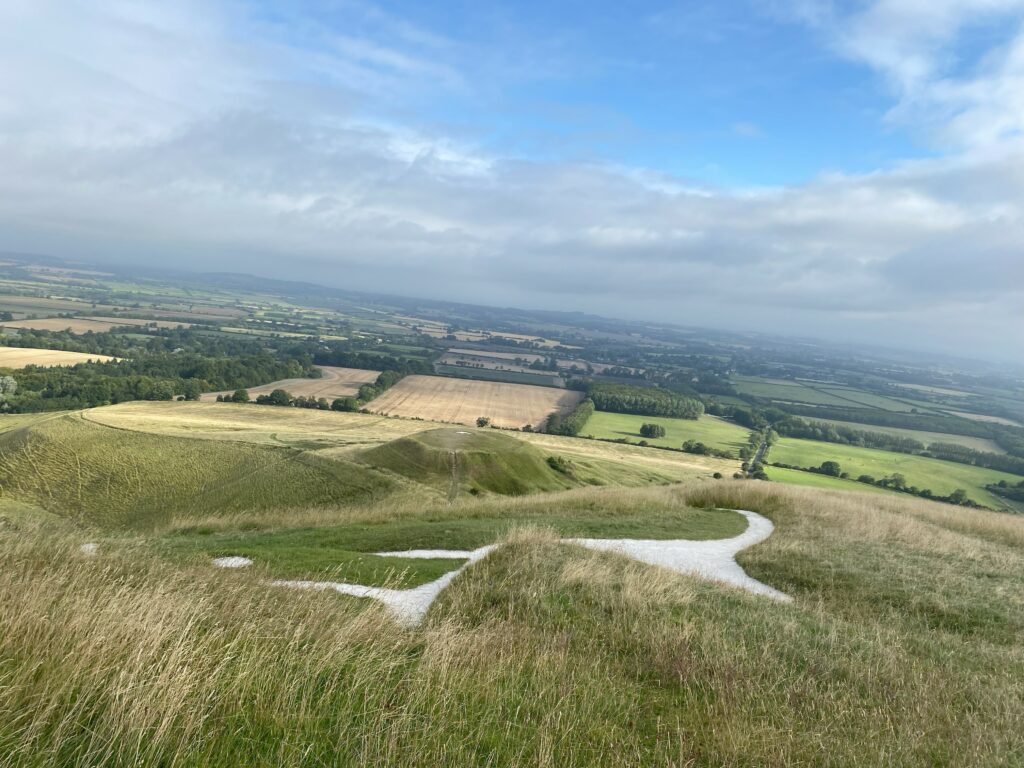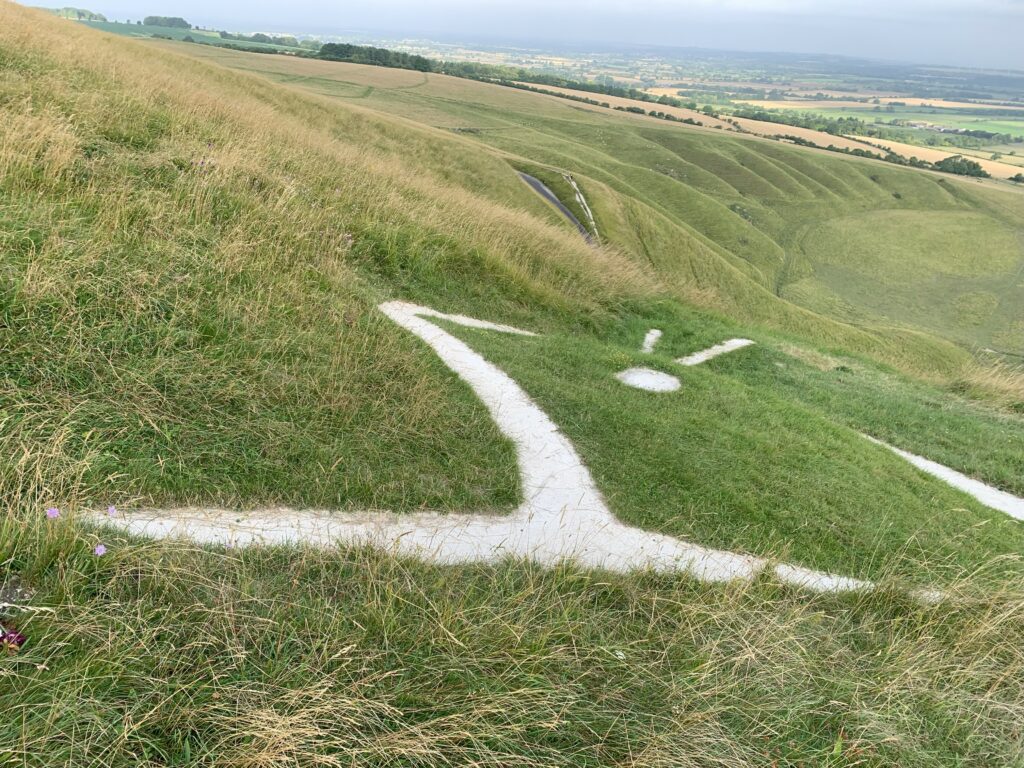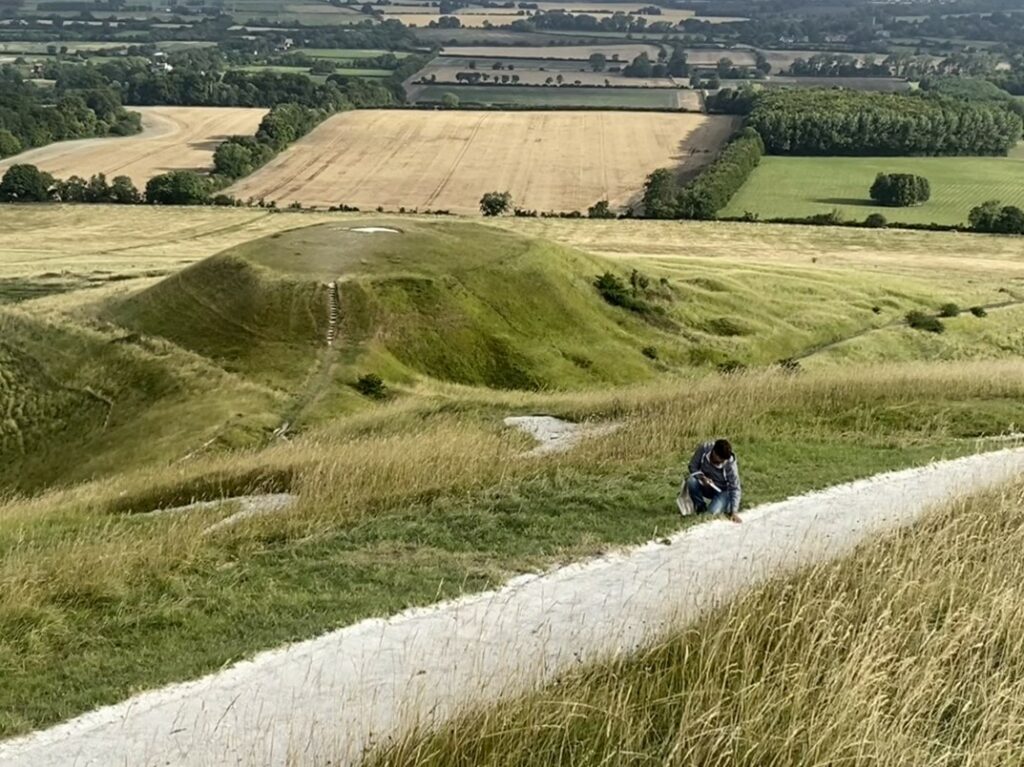By Dr. Jeff Swim

My article in the latest issue of the Victorian Review (49.2) looks at the convergence of archaeology, ecology, and pagan revivalism in the works of Richard Jefferies. Jefferies’ youth was spent walking the hills and fields of Wiltshire, especially in the regions around “the old house at Coate,” the Jefferies’ family farm in Swindon. During these walks, Jefferies became intimate with the ecological and archaeological significance of the countryside. This intimacy is demonstrated in essays such as “The Pageantry of Summer” and books such as The Story of My Heart. For Jefferies, the enduring prehistoric earth and stone works of Wiltshire, such as the Iron Age Hillfort Liddington Castle, and geoglyphs, such as the Uffington Whitehorse, become sites of deep feeling and metaphysical contemplation.
My essay examines Jefferies’s inclinations towards pagan prehistory. Jefferies’ interest in paganism is distinct from the Neo-Pagan movements that began in the Victorian period and branched into new religious movements such as Wicca. The latter tend towards a consistent, ritualistic, and religiously observant way of experiencing the sacred and the supernatural, whereas Jefferies’s affiliation with paganism is looser and more experimental; his is a “pagan sentiment” akin to that which Walter Pater elaborates in Studies in the History of the Renaissance (99), but one which is grounded in the chalky earth of Wiltshire as opposed to the stony ground of the Grecian islands. Jefferies’ less structured, more intuitive evocation of pre-Christian forms of feeling and belief expresses a personal ethos of feeling compelled by his experiences near local “pagan” prehistoric sites. Thus, I refer to this stylistic strategy as an affectation of paganism to draw attention to the blend of play and intensity of authentic experience Jefferies conveys. In short, I argue that for Jefferies “paganism” is more of an aesthetic sensibility than a strictly spiritual or religious domain of experience.
For instance, in Amaryllis at the Fair (1887), Jefferies declares: “I am a pagan, and think the heart and soul above crowns” (20-21). My article details how this sentence demonstrates what I think is key to understanding Jefferies’s triangulation of the ecological, the archaeological, and the affective. For, in the context of the novel, he interjects with this puzzling declaration while contemplating the existential value of old, enduring things that have accrued affective resonance. To affiliate with paganism, for Jefferies, is to claim the term as a mode of feeling and experience that provides an alternative to both secular materialism and Christian transcendentalism.
Inspired by my research on Jefferies, my wife and I took a trip to England in the summer of 2024, intending to visit several of the prehistoric sites Jefferies writes about. Due to an unfortunate foot injury, I was unable to walk directly in Jefferies’s footsteps and visit all the places we hoped to (especially disappointing was that we missed Liddington Castle, Jefferies’ favourite haunt). However, we did visit several other places such as the Uffington White Horse, Avebury Stone Circle (which was not yet re-erected in Jefferies’ day), and the nearby Silbury Hill.
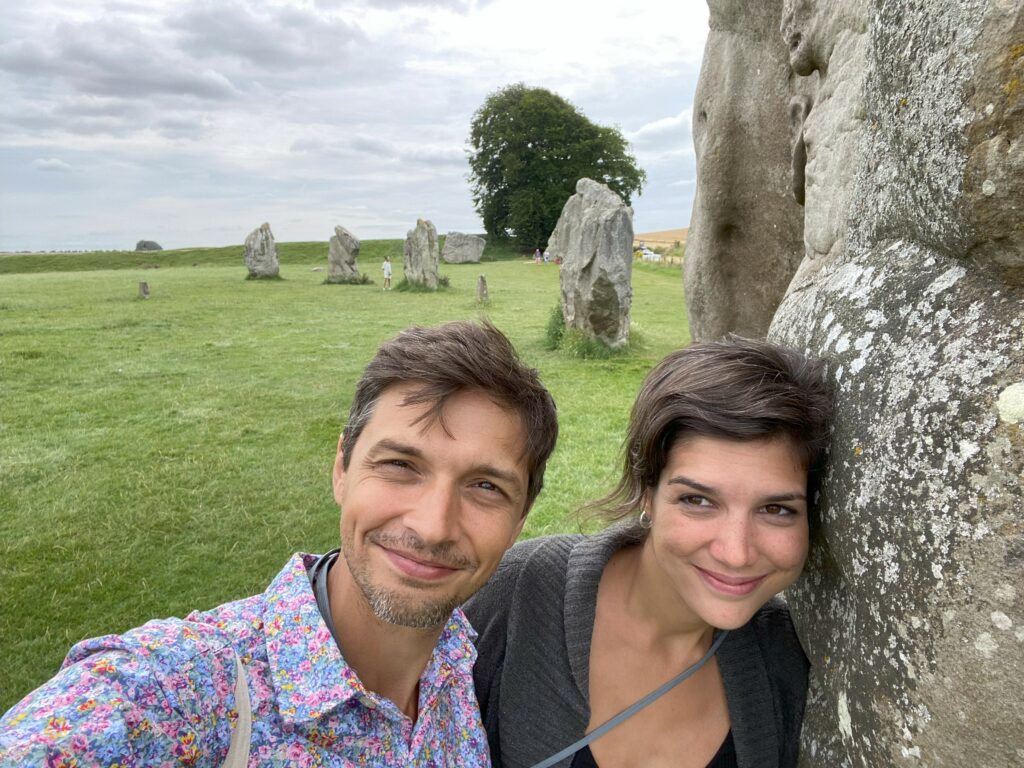
I was especially curious to be in the presence of the tumuli that Jefferies writes about. For instance, in The Story of My Heart, Jefferies conjures the spirit of a prehistoric Briton interred within a burial mound he is resting atop, claiming to experience a slippage of temporality in proximity to this tumulus that allows him to “slip back the twenty centuries with the buried pagan warrior whose “spirit could endure from then till now, and the time was nothing” (63).
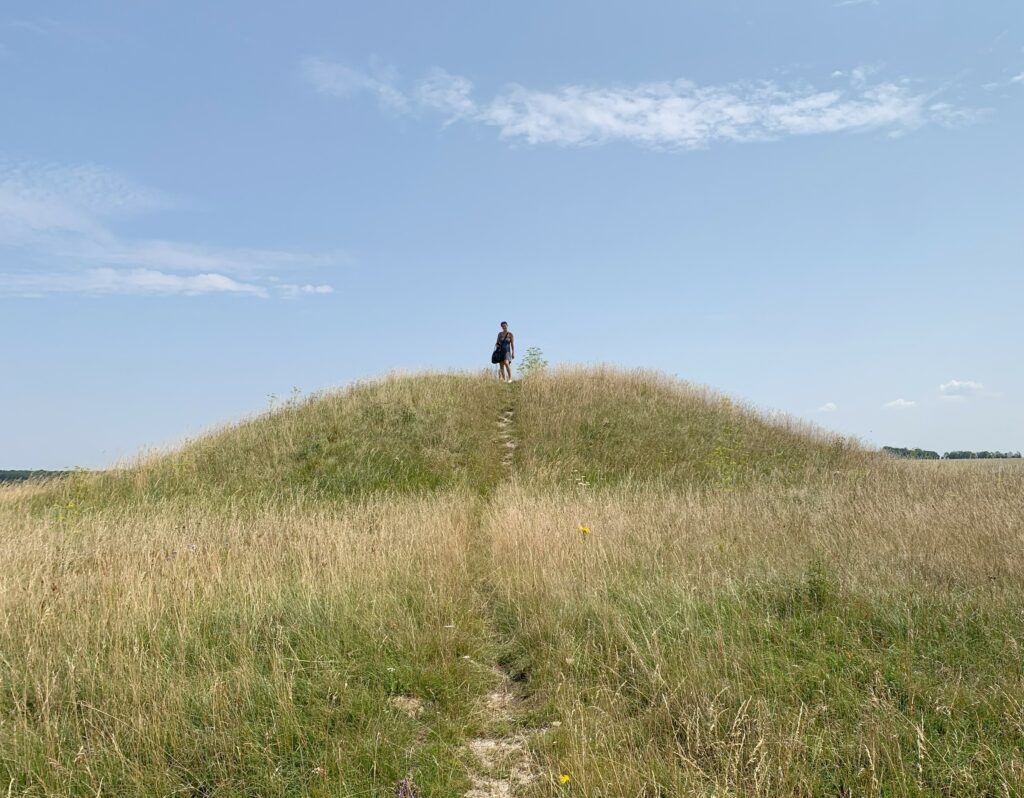
While we were not able to visit some of the exact mounds Jefferies frequented (many are now apparently quite overgrown or on private property), we were able to get a sense of the kind of tumuli Jefferies writes about during our trip to Stonehenge.
It was while being in the presence of the Uffington White Horse, an iconic late Bronze Age geoglyph, that Jefferies’ appeals to prehistoric English paganism were clarified for me. In some ways, it confirmed my position on his pagan sensibility as not a consistent or coherent belief system or world view.
The landscape which is so characteristic of rural Southwestern England took shape during the “Neolithic” period. Being atop the Uffington White Horse can move you to experience the land in a different way, urging you to feel the deep continuity of human habitation and connection to place this enduring figure commands. Being there clarified Jefferies’s affectations of paganism as a desire to feel with the deep past, an attempt to connect to something earthbound, rooted but cyclical: an awareness of the seasonality of the land. Yet it is also something that orients one’s vision to the horizon, the “wider horizon of feeling” Jefferies himself was searching for atop Liddington Hill (The Story of My Heart 30).
No one really knows what the Horse is meant to signify—or indeed, if it is a horse at all. Some local legends refer to it as “Dragon Hill,” site of the spot where St.George slew the dragon (itself a metaphor for a supposed triumph of Christianity over paganism). The White Horse is not, however, a stable monument like Stonehenge. In fact, if the Horse is not maintained by the local volunteers who scrape away the turf and expose the chalk in this particular shape, the whole thing may vanish within two or three decades. Thankfully, the ritual “chalking or ‘scouring’ the horse,” firmly noted as an already very ancient tradition by an 18th century antiquarian, has been observed for several millennia (Cleaver).

The Uffington White Horse also showed me that paganism, as it is expressed in Jefferies, is an aesthetic of the process of walking the countryside and seeing things scurry in and out of view as you proceed, of seeing lines and figures take shape as you move with them. We did get a glimpse of the Horse in full at a distance as we approached by car, and it certainly is striking in its full glory. Yet, it was the experience of walking with the chalk contours of the figure, seeing it in its snaking lines winding through the grass that really animated it. Being there brought this home to me: that Jefferies’s affiliations with paganism are the feelings of one being moved by a landscape that proclaims a sense of continuity with the deep past and instills a profound sense of the wonder of living with and near “prehistory.”
In this sense, Jefferies is a pagan—and a pagan of a thoroughly modern sort. As Ronald Hutton points out, though there may not be definitive evidence of “survivals of paganism” in the form of intact belief systems, there are “pagan survivals”—imprints and intimations of pre-Christian, pre-modern, “prehistoric” ways of living and feeling (30-38). These survivals, like the Uffington White Horse, Avebury Stone Circle, and Stonehenge, both require and receive protection and maintenance. They still matter.
Richard Jefferies probably would not have joined a neo-pagan coven, but he certainly shared in the ecstatic enthusiasm for the ancient human-shaped landscape that draws so many contemporary pagans to it, observing and revering its weird will.
Works Cited:
Cleaver, Emily. “Against All Odds, England’s Massive Chalk Horse Has Survived 3,000 Years,” Smithsonian Magazine, 6 July 2016, https://www.smithsonianmag.com/history/3000-year-old-uffington-horse-looms-over-english-countryside-180963968. Accessed 3 October 2024.
Hutton, Ronald. Queens of the Wild: Pagan Goddesses in Christian Europe: An Investigation, Yale UP, 2022.
Jefferies, Richard. The Story of My Heart as Rediscovered by Brooke Williams and Terry Tempest Williams, (1883) 2014.—. Amaryllis at the Fair, Alan Sutton, (1887) 1992.
Pater, Walter. Studies in the History of the Renaissance, Oxford UP, 2010.


